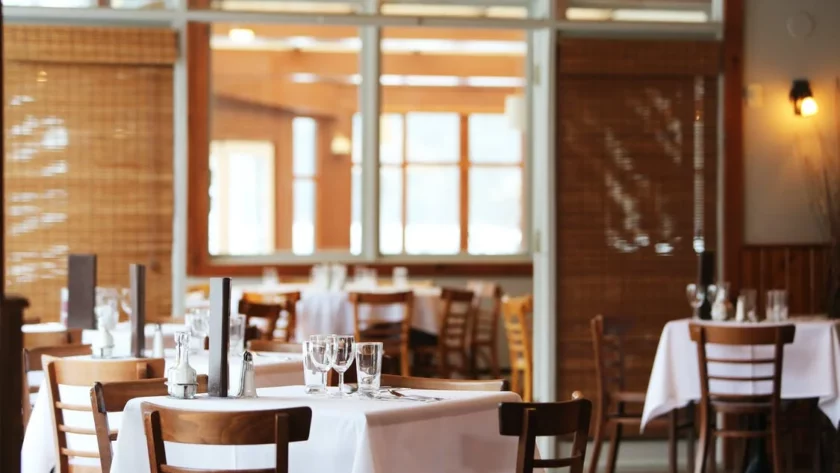There are probably a few things more fascinating than owning your restaurant. It doesn’t matter if you’re a chef with world-class culinary skills you want to share with the world or a foodie that’s always dreamt of running your own place; owning a restaurant is a wonderful feeling.
However, despite the thrills that come with the business, it’s very expensive and frankly difficult to run. According to data from Sage, the average startup cost for a restaurant in 2021 is $275,000. This figure is for a restaurant that plans to run on a leased building. The costs rise to $425,000 if you plan to own the building and might also incur monthly costs ranging from $48,000 to $75,000.
Unfortunately, this figure might be too high to handle, and if you plan to fulfill your dream, you’ll have to look at the different restaurant financing options available. It’s also no secret that selecting the right financing can be hard and confusing. That’s why many entrepreneurs like you visit comparison sites like laina-finance.fi to analyze and compare several options before making a choice.
As a prospective restaurant owner looking for the right options to fund your dream, here are some of the best financing options to consider.

Traditional Bank Loan
There is an opportunity of borrowing a fixed amount of money from a national or regional bank. These loans usually come with specific time frames and interest rates.
While traditional bank loans are the surest route to receiving large amounts of money, the chances of your loan application being approved are very low. In fact, large banks have an approval rate of 14% for small businesses like restaurants, and medium & small banks are just under 20%.
In addition, traditional bank facilities usually come with a lengthy application process. According to research data from OnDeck, the average processing time for brick-and-mortar bank loans spans 14-60 days. Plus, they usually require collateral before approving your application.
Alternative Loans
Non-traditional bank loans are one of the fastest ways restaurateurs can secure funding for their business. These types of lenders include online consumer lenders like Sorter, more information about it can be found here — https://laina-finance.fi/sortter-laina. These firms have a faster application process, higher approval ratings, and decent interest rates.
Another major advantage of alternative loans is that they’re more lenient with startups. For example, most banks might not give you a loan if your restaurant has not been active for at least two years. But alternative financial institutions such as https://laina-finance.fi/bondora-laina usually don’t have such stringent requirements.
Merchant Cash Advance
This is a special type of loan where the lender pays a huge amount of money into the restaurant and gets repaid through the firm’s future sales.
MCAs are unlike traditional loans that require monthly payments. Payments are collected from the purchases in the restaurants. These deductions could be daily or weekly, depending on the provider.
This kind of financing is perfect for restaurants needing immediate funds to tackle short-term or unexpected expenses. It can also be useful in restaurants suffering from cash-flow shortfalls.
Crowdfunding
Instead of receiving funds from a single lender, crowdfunding allows you to be funded by multiple individuals. Most crowdfunds are filled with everyday people and can be one of the best ways to market and fund your restaurant simultaneously.
The more you advertise the crowdfund, the more exposure your business gets. It’s also a perfect opportunity to get the community along and build a solid following. However, successfully marketing your crowdfund might require you to spend, and if you ever fall short of your target, you have to return everything you’ve raised to the investors and start from scratch.
Family and Friends
This option is last on our list because it’s not necessarily viable. Everybody feels some way about borrowing from family and friends, but it all depends on their wealth status and the relationship you share with them.
If you choose to borrow from family or friends, always be clear about every detail. This is business, and you should treat it as one. Be clear on the amount you need, how long it will take you to pay back, and if they require interest. It’s also advisable to get things in writing; agreements should be bounded by law.
Despite not being the most viable option, borrowing from family and friends has benefits. For starters, they mostly don’t come with interests and are usually flexible. However, these types of advances can ruin relationships and lead to several issues if things go south.
The Bottom Line
It’s no secret that 60% of restaurants fail within their first year, while 80% fail within the first five. However, one of the major causes of these unpleasant statistics is the lack of adequate funding.
That’s why restaurants must have access to adequate financing options. This will ensure they launch and grow successfully. Some of the best options include traditional bank loans, alternative loans, Merchant Cash Advances, crowdfunding, and loans from friends and family.



